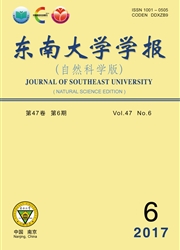

 中文摘要:
中文摘要:
运用广义阻抗模型的思想构建峡谷型路段的环境交通阻抗模型.首先给出峡谷型路段底部污染物浓度计算方法.忽略环境因素对污染物垂直分布的影响,运用数值拟合方法,对现有实验数据进行一元非线性拟合,得到峡谷型路段污染物浓度垂直分布特性.运用污染物浓度与健康效应的剂量一反应关系(C-R)函数,定量分析城市大气污染物对城市居民健康的影响,并在此基础上运用支付意愿法,对污染物单位排放量造成的健康损失进行货币化;在传统的BPR路段阻抗函数的基础上构造基于健康损失的峡谷型路段广义阻抗模型.以CO作为污染物建立广义阻抗并对其特性进行分析.研究表明:基于健康损失的广义阻抗主要贡献来源于健康损失部分,在当量交通量一定但车型比例不同的条件下,由BPR函数确定的狭义阻抗是定值,但是由于机动车尾气排放因子不同,广义阻抗会随着车型比例变化而变化.
 英文摘要:
英文摘要:
An environmental traffic impedance model is constructed based on generalized imped- ance. First, a method of calculating pollutant concentration on the bottom of street is given. Then vertical distribution of pollutant concentration is obtained through unitary nonlinear fitting. Healthy effect caused by atmosphere pollutant is quantitatively analyzed by using concentration-response rela- tionship between pollutant concentration and healthy effect, and then this healthy effect is monetized by willing payment method. Generalized impedance model considering health impacts is constructed, which is based on traditional BPR (bureau of public road) function. At last, an example of general- ized impedance model based on CO is constructed and its characteristic is analyzed. Health impacts monetization is the most important part in the generalized impedance model which is based on health impacts. Impedance calculated by BPR model is a fixed value when the traffic volume is fixed. However, generalized impedance is variable if vehicle type proportion changes, because different vehicle types have different emission factors.
 同期刊论文项目
同期刊论文项目
 同项目期刊论文
同项目期刊论文
 期刊信息
期刊信息
